Just a spoonful …
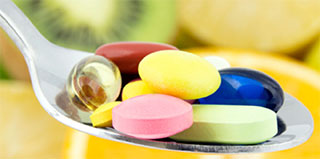 Chances are, seven out of 10 adults like you take at least one prescription medication, and more than half of you take two prescribed medications. Also, 20 percent of adult Americans take at least five prescription medications per day.
Chances are, seven out of 10 adults like you take at least one prescription medication, and more than half of you take two prescribed medications. Also, 20 percent of adult Americans take at least five prescription medications per day.
Antibiotics are the most commonly prescribed drugs, followed by antidepressants and opioids. Nearly 75 million American adults take blood pressure medications. And cholesterol-lowering drugs, primarily statins, are also prescribed to more than 28 percent of American adults. For people younger than 19, vaccines, anti-asthma drugs, and antibiotics are the most commonly prescribed medications.
On a per capita basis, the top five states with the highest prescription usage are West Virginia, Kentucky, Mississippi, Arkansas, and Louisiana. Michigan ranks in the top 10 when it comes to pharmacy-filled prescriptions.
Drug actions and interactions are variable
As I detailed in a previous Health Yourself column, “Mood Swing,” drug effects on any one person may be different than expected. Persons taking more than one medication need to be aware of any interactions between them (i.e., drug-drug interactions). Specific foods, beverages, or dietary supplements also impact medications (nutrient/food-drug interactions), and certain medications interact with certain diseases a person may have (disease-drug interactions).
A drug interaction of any kind represents a situation in which a substance, condition, or a person’s disorders can affect a drug’s performance. In some cases, a drug’s effects may increase or decrease; an interaction may even produce a new or different drug effect. Most food-drug interactions cause serious side effects, unbeknownst to the individual consuming either one.Food-drug interactions represent an important and widely under-recognized reported source of medication “errors.”
Known food-drug interactions
The interaction of foods and drugs is a common hidden problem little understood by patients and—in some cases—their physicians. The interactions between natural products and drugs are based on the same pharmacokinetic and pharmacodynamic principles as drug-drug interactions. For example, several fruits and berries have recently been shown to contain agents that affect drug-metabolizing enzymes.
Grapefruit is the most well-known example, but also oranges, pomelo (citrus fruit similar to a grapefruit), and star fruit contain agents that inhibit the most important enzyme in drug metabolism.
Here are some specific examples of food-drug interactions of which we should all be aware, especially if we are taking these certain medicines or have these specific conditions.
High-potassium foods
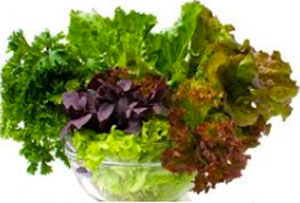 Foods high in potassium, like bananas, oranges, and leafy greens, interact with medications used to lower blood pressure (ACE inhibitors such as Capoten, Vasotec, and Lisinopril). Too much potassium can cause an irregular heartbeat and heart palpitations. High potassium levels can also interfere with kidney function, in those with chronic kidney disease.
Foods high in potassium, like bananas, oranges, and leafy greens, interact with medications used to lower blood pressure (ACE inhibitors such as Capoten, Vasotec, and Lisinopril). Too much potassium can cause an irregular heartbeat and heart palpitations. High potassium levels can also interfere with kidney function, in those with chronic kidney disease.
Kale and other greens
Kale and other greens, including broccoli, cabbage, spinach, and brussels sprouts, are rich in vitamin K. High levels of vitamin K can reduce anti-blood-clotting effects of blood thinner medications like warfarin (Coumadin and Jantoven).
Grapefruit and other fruit juices
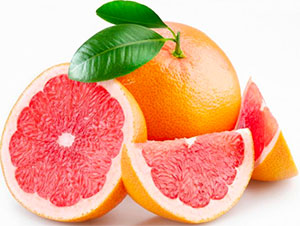 One of the most well-known food–drug interactions is grapefruit juice and reductase inhibitors, commonly known as statins, used to lower cholesterol and blood fat. Grapefruit juice, in large quantities (32 oz. or more per day), can inhibit enzymes that increase blood levels of statin drugs. Not all statins exhibit this interaction, however. The drugs most often affected include atorvastatin (Lipitor),simvastatin (Zocor),and lovastatin (Mevacor).Other statins, rosuvastatin (Crestor),pravastatin (Pravachol),and fluvastatin (Lescol),are less affected.
One of the most well-known food–drug interactions is grapefruit juice and reductase inhibitors, commonly known as statins, used to lower cholesterol and blood fat. Grapefruit juice, in large quantities (32 oz. or more per day), can inhibit enzymes that increase blood levels of statin drugs. Not all statins exhibit this interaction, however. The drugs most often affected include atorvastatin (Lipitor),simvastatin (Zocor),and lovastatin (Mevacor).Other statins, rosuvastatin (Crestor),pravastatin (Pravachol),and fluvastatin (Lescol),are less affected.
When grapefruit juice is consumed in combination with these drugs, there is an increased risk of statin-related side effects, most notably muscle toxicity, muscle pain and weakness, and worsening of asthma symptoms. There are other effects, too.
While the statins receive the most public attention for their interaction with grapefruit juice, other cholesterol-lowering drugs like calcium channel blockers used to lower blood pressure exhibit similar interactions with grapefruit juice. The calcium antagonist that is the most affected by fruit juice is felodipine (Plendil), demonstrating as high as a 200 percent increase in its effects.
Other drugs that directly interact with fruit juices, particularly grapefruit juice, include estrogen-containing oral contraceptives. Popular anti-anxiety disorder drugs like diazepam (Valium), temazepam (Restoril), and midazolam (Versed) also have a negative effect with the introduction of grapefruit juice.
Dairy products/calcium
In contrast to grapefruit juice, dairy products high in calcium may cause a chemical interaction; this is different from the metabolic interaction that occurs with fruit juices. Calcium ions bond with different drugs, decreasing absorption and overall effectiveness. Bread and other foods enriched with calcium exhibit similar interactions. Bisphosphonates, like Fosamax,that are used to prevent and treat osteoporosis are especially problematic when taken with dairy products.
Protein-Rich Foods
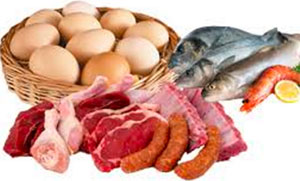 Protein-rich foods can interfere with, or potentiate the absorption of various medications, particularly Propranolol a beta-blocker drug used to treat high blood pressure, chest pain (angina), uneven heartbeats (atrial fibrillation), and performance anxiety.
Protein-rich foods can interfere with, or potentiate the absorption of various medications, particularly Propranolol a beta-blocker drug used to treat high blood pressure, chest pain (angina), uneven heartbeats (atrial fibrillation), and performance anxiety.
Consuming a high-protein meal and concurrently taking propranolol can increase the beta-blocker’s bioavailability. When propranolol is taken with protein-rich foods, there is an increase in bioavailability up to 53 percent. Significant and notable side effects can include nausea, abdominal pain, constipation, and increases in liver and kidney problems.
Fiber-rich foods
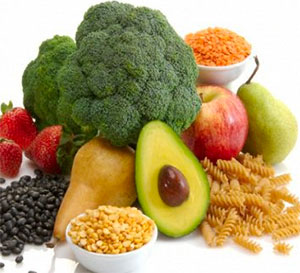 Fiber works to bind drugs, resulting in their decreased concentration. For example, patients with diabetes who try to decrease their cholesterol levels by eating high-fiber foods after taking Metformin (the most widely used medication for diabetes) might be worsening their diabetic control since metformin blood levels are decreased when taken with large amounts of fiber (>30 g/d) in many individuals.
Fiber works to bind drugs, resulting in their decreased concentration. For example, patients with diabetes who try to decrease their cholesterol levels by eating high-fiber foods after taking Metformin (the most widely used medication for diabetes) might be worsening their diabetic control since metformin blood levels are decreased when taken with large amounts of fiber (>30 g/d) in many individuals.
Foods containing Vitamin C
Vitamin C and foods and juices fortified with vitamin C and other vitamins can interact with different amphetamine-containing drugs like Adderall, commonly used to treat ADHD, narcolepsy, and athletic performance.
Vitamin C-containing foods consumed concurrently with Adderall may impair gastrointestinal absorption of food. Children who take Adderall for ADHD should avoid taking these drugs with apple or orange juice in the morning.
Tyramine-containing foods
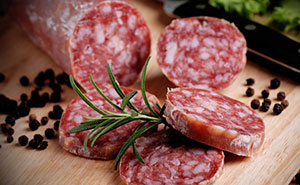 Tyramine is a chemical found in strong, aged cheeses, cured meats, and some beans and soy products. Tyramine exhibits significant interaction with monoamine oxidase inhibitors (MAOIs) used to treat depression, bacterial infections, and Parkinson’s disease. Interactions include spikes in blood pressure, severe headaches, fast heartbeat, chest pains, nausea, vomiting, and changes in vision.
Tyramine is a chemical found in strong, aged cheeses, cured meats, and some beans and soy products. Tyramine exhibits significant interaction with monoamine oxidase inhibitors (MAOIs) used to treat depression, bacterial infections, and Parkinson’s disease. Interactions include spikes in blood pressure, severe headaches, fast heartbeat, chest pains, nausea, vomiting, and changes in vision.
Black licorice
Licorice derives from the root of Glycyrrhiza glabra. The licorice plant is a herbaceous perennial legume native to southern Europe and parts of Asia.
Interestingly, much of the black licorice sold in the United States doesn’t contain any actual licorice from the licorice plant. Instead, manufacturers add anise to the candy to give it a licorice-like flavor. Real black licorice candy interacts with digoxin (Lanoxin),which is used to treat heart failure and abnormal heart rhythms.
The licorice root can cause pseudoaldosteronism, a condition of fluid retention from increased sodium retention. The syndrome can cause increased blood pressure, irregular heartbeats, and potentially dangerous heart rhythms as well as muscle weakness and, in severe cases, paralysis.
What to do?
What you eat and drink can affect the way your medications work. Before taking any medication, it is important to know of any possible “food-drug interactions.” We need to keep track of the prescription and over-the-counter medicines we use, in addition to the vitamins, herbal supplements, and other dietary supplements we take. Unexpected side effects often come from unlikely sources.
References
- Holbrook, A.M., et al. “Systematic overview of warfarin and its drug and food interactions.” Arch Intern Med. 2005; 165:1095-1106.
- Leibovich, E.R., et al. “Food-drug interactions: Careful drug selection and patient counseling can reduce the risk in older patients.” Geriatrics. 2004; 59:19-33.
- Libersa, C.C., et al. “Dramatic inhibition of amiodarone metabolism induced by grapefruit juice.” British Journal of Clinical Pharmacology. 2000; 49:373-378.
- Liedholm, H., et al. “Mechanisms and variations in the food effect on propranolol bioavailability.” European Journal of Clinical Pharmacology. 1990;38:469-475.
- Rabia, B., et al. “Food-drug interactions.” Oman Medical Journal. 2011; 26(2):77–83.
- Summers, K.M. “Potential drug-food interactions with pomegranate juice.” Annals of Pharmacotherapy. 2006; 40:1472-1473.
- Wallace, A.W., Amsden, G.W. “Is it really OK to take this with food? Old interactions with a new twist.” Journal of Clinical Pharmacology. 2202;42:437-443.
- www.fda.gov/downloads/drugs/resourcesforyou/consumers/buyingusingmedicinesafely/ensuringsafeuseofmedicine/generaluseofmedicine/ucm229033.pdf



Muffy MacKenzie - 85
So helpful!! Thank you.
Reply
Jacqueline Gile
Thank you for your article. I had a reaction to an adrenal supplement containing licorice root, I gained 8lbs of fluid in 5 days while following the suggested dosage. I was however on Armor Thyroid medication at the same time. Does that have any impact?
I no longer take the Thyroid meds but have adrenal issues and am afraid to try this again. The weight didn’t just fall off like water weight afterward.
Most hormone balancing supplements contain licorice root. Do you have any suggestions for adrenal sufferers over 50? by the way -female menopausal-56yrs young.
Reply